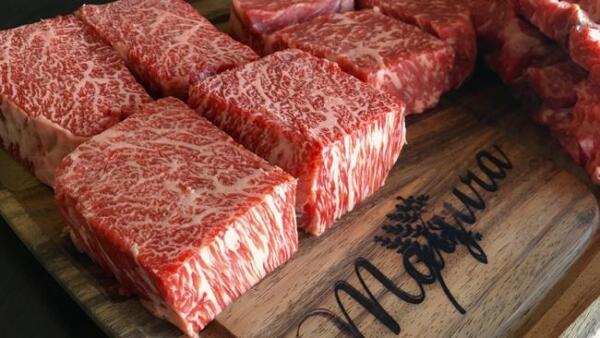Mayura Station’s Scott de Bruin was a keynote speaker at Future Genetics, the Team Te Mania annual workshop, held this month in Adelaide. Scott is the man at the helm of a South Australian owned and operated, Wagyu based, vertically integrated beef marketing and retail enterprise which is now taking the world by storm.
Scott de Bruin doesn’t mince his words.
But the man who is very much the face of the Wagyu whirlwind still ends up mincing a lot of meat into the humble burger.
Which he doesn’t mind admitting. To anyone.
Mind you, Scott and his business Mayura Station, are a bit more than a whirlwind, they are an industry revolution.
Because while Mayura may be home to 12,000 fullblood Wagyu cattle, Scott is definitely not in the beef cattle business.
No. Scott is in the luxury beef business.
And right now, in Australia, he’s pretty much in a world of his own.
That’s the key message Scott was delivering to Future Genetics, the 2023 Team Te Mania annual workshop, held this year in Adelaide, with member herds from SA, Victoria and NSW attending.
Angus cattle breeder and Team Te Mania director Hamish McFarlane describes Scott and Mayura as “the bold and exciting new face of the Australian beef industry”.
Hamish says it is “impossible” to hear firsthand the Mayura journey and not be impressed.
“Having Scott join us in Adelaide was a valuable opportunity to understand what beef cattle producers have in front of them if they are looking to expand their horizons but remain focused on their core business,” he says.
“When Te Mania Angus set up Team Te Mania almost 30 years ago it was a multifaceted program – it created a unique progeny test opportunity for our core genetics business, a chance for commercial producers to access cutting edge, next-generation bulls ahead of the wider market and as a second client base with which to spread our genetics.
“And part of our commitment to our member herds – the coalition today exceeds 40 herds – we engage with them on a regular, value-added basis through field days, workshops and data sharing.”
Based at Millicent, in South Australia’s South-East, Mayura is a fully-integrated enterprise, but one that starts with the consumer and ends with genetics.
Your average beef producer is production driven. Sure, with advice from multiple sources, from how to grow better pasture to ever better data about the key traits. So much information it’s often hard to keep track and hard to keep up.
Scott might have the world queuing for a mouthful of his 9+ marbling luxury, he might be a self-declared meat producer but he is also a pragmatist.
“There are a lot of fabulous cuts on a beef carcase, but there is a lot more processing beef, so yes, we make a lot of hamburgers,” he grins.
“But they aren’t your everyday burger, these are Mayura Wagyu burgers, so they would be the best.”
As dynamic and challenging as the retail end of the Wagyu production chain has become, Scott and his team still put a lot of time and effort into the industry mundane, from accessing outcross genetics to running their own progeny tests – but it is all internal and all designed to enhance the five-star reputation on which the brand has been built.
Scott is as self-deprecating as he is driven.
He can’t resist telling the story of the Mayura sire Itoshigenami Junior, who would become the breed’s pinup bull – not just in Australia but the whole world.
Itoshigenami JNR and his descendants turned the industry on its head.
“I kept getting these carcases with astonishing marbling and I realised they all had the same sire, so I rang the property to check if we still had that bull,” he says.
“Turns out we did, and when I looked him up there were these big red lines through his details with my note to cull him as he was such a runty thing,” Scott laughs.
The rest was history.
Junior’s genetics would spread across the globe, and the ripple effect could be measured in the tens of millions of dollars.
He would become one of the most proven bulls of any breed in the world and Scott would turn down some big bids for his runt.
They peaked at $500,000 – but it was still no sale.
While Scott wouldn’t sell him, he did part with some semen.
Well, he parted with 12 straws across three years, anyway.
Straws which would sell for $72,500 here and fetch $82,500 in the US. At the lower price it equalled $870,000 (slightly better than the half a million offered for Junior lock, stock and barrel). At the upper end of the market, it hits $990,000 – so close to $1 million as to make any breeder’s eyes water.
He’s also dabbled in selling bulls and females. His last bull sale, and he means last, saw his catalogue of just nine animals average $48,900. His equally last line of 26 heifers would average a staggering $27,346.
While he is also happy to focus everyone’s attention on his lucrative prime cuts (some selling for $1250kg or more), Scott knows, in the back of his mind, in some ways he and McDonald’s are more closely aligned than he might care.
Because in both businesses there is one key word – consistency.
Both know their customers keep coming back because they know they are going to get the exact meal they expect. Every time.
If you can’t do that, he says, you might just be in the wrong business.
Hamish says the Mayura story certainly reflects where the Team Te Mania journey began for Angus genetics – taking a quality product and turning it into a much bigger scale enterprise.
“Just as Scott and Mayura took their market leading Wagyu genetics to the country and then the world, the profile Te Mania Angus has been able to build through its genetic progress and through vehicles such as Team Te Mania, has also set us apart in the market,” Hamish explains.
“As far as we are aware no-one else has tried to replicate the work we have done through the Team on the scale we have, although in his own way, Scott has done it in a very intensive, vertically integrated – and very successful – strategy,” he says.
“And just as Scott has, we have also become increasingly protective of how and where our semen goes in the local market and introduced various programs to control that.
“Just as the Te Mania Angus story is similar to – but not quite as old as – the Mayura history. Our gene pool was founded in 1928, and although we see ourselves as pioneers in genetics, Mayura has a real pioneering background to go with its dynamic 21st century revolution.”
Because while he is truly redefining the retail beef market, Scott’s story goes way back in agricultural South Australian livestock history.
In 1845, less than 10 years after the founding of the state, it was taken up as one of South Australia’s first pastoral leases and it has a long and proud history as home to a number of agricultural pursuits.
Like all early selections, Mayura became a sheep property but is today part of a local scene, which sees him surrounded by other beef cattle, cropping, horticulture, prime/crossbred lambs, dairy, (lots of) viticulture – and most recently forestry. But, it should be pointed out, not a lot of beef cattle.
“The family property started back in the 1970 when my late father Adrian signed up for the first piece of today’s station,” Scott says.
“The Wagyus arrived in the ’90s (25 females all but circumnavigated the globe getting from Japan to Australia) and were one of the first major export shipments of live fullblood cattle to Australia,” he adds.
Today Mayura has 12,000 animals, we turn off more than 75 tonnes of beef every month, with high-end restaurant goers hanging out for every kilogram in the domestic market, and increasingly overseas.
Scott says they started exporting in 2004 and if there was a better time to test the market, he’s never found it.
He says the business had to expand to a significant export enterprise to become truly viable in the long-term, and if there’s one extra thing about which he can warn people it’s this: “marketing is a lot harder than it looks”.
Unless you just happen to be in the right place and at the right time.

Scott was just reaching out to markets overseas, starting with Hong Kong based distributors in 2003.
Just in time for one US dairy cow to test positive for mad cow – and the global market went even madder, creating a gap in the market to fill.
“You hear people say ‘right place, right time’ but in our time I reckon that’s exactly what it was,” Scott adds.
Meanwhile, back on the farm, Mayura’s beef production system is strictly 100 per cent quality or bust – and there is absolutely no prize for second because you’re out.
Weaned early at six months, the calves enter ‘range feeding’ in-paddock for 12 months, luxuriating on a diet topped up by a daily silage-based ration, with some grain, to ensure frame and muscle development.
Twelve months later, only the best-performing gain entrée to one of Mayura’s two undercover finishing barns. The latest, at 12,000 square metres, was completed in 2021 for a lazy $2.5 million and can host 1600 head.
Who all enjoy a further 270 days at the feed troughs, hoovering up a wheat-based ration containing corn, meal, bran and chocolate, to enhance flavour and marbling.
Cattle are processed by the G & K O’Connor abattoir and the monthly turn-off of about 240 head delivers the aforementioned 75 tonnes.
“Being able to hit that target year-round nis crucial to our marketing strategy,” Scott explains.
“With that demand for consistency comes a demand for consistency wherever and whenever you go out for dinner, it’s a target we can’t miss,” he says.
The final touch would be added about 7km out of Millicent, down a dirt track.
The Tasting Room, Mayura’s own restaurant, opened in 2010 as a showroom for Mayura’s Wagyu magic. It might be in the middle of nowhere, more than four hours south of Adelaide by car, and only open Thursday to Saturday inclusive, with room for no more than 55, but it’s a world beater.
And so is Mayura Wagyu. It is a pioneer and may well become the prime mover of the prime meat market.





